Tracking Oko from Sweden
Sven Grahn
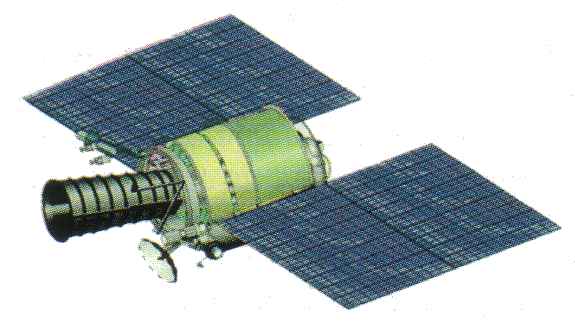 To
track the Russian Oko missile-warning satellites (see sketch on the right)
on S-band is no big feat but for me it was great, after 40 years of satellite
monitoring, to finally track a satellite on S-band. Oko satellites transmit
strong CW signals on 2286, 2292, 2298 and 2304 MHz. These satellites move
in "Molniya" orbits, the elliptical orbits with about 12 hours period and
apogee over Asia or North America. The Asian loop apogee can be seen at
75-80 degrees elevation from Sweden and the satellite moves very slowly.
In this way a fixed antenna direction can be used for long periods. Hopefully,
this little account can encourage more enthusiasts to try this.
To
track the Russian Oko missile-warning satellites (see sketch on the right)
on S-band is no big feat but for me it was great, after 40 years of satellite
monitoring, to finally track a satellite on S-band. Oko satellites transmit
strong CW signals on 2286, 2292, 2298 and 2304 MHz. These satellites move
in "Molniya" orbits, the elliptical orbits with about 12 hours period and
apogee over Asia or North America. The Asian loop apogee can be seen at
75-80 degrees elevation from Sweden and the satellite moves very slowly.
In this way a fixed antenna direction can be used for long periods. Hopefully,
this little account can encourage more enthusiasts to try this.
I have put together a setup
using an Airlink
60 antenna designed for WLAN frequencies that also works on 2200-2300
MHz. It is linearly polarized, so the gain when picking up circulalrly
polarized signals is 3 dB less, i.e. about 19 dB. Its beamwidth is about
14 degrees. The antenna is followed by a SSB Electronic SLN
series pre-amp. The signal is then fed into a downconverter that I
bought from SSB Electronic several years ago, but have never really found
use for. It converts 2200-2300 MHz to 600-700 MHz. I tuned the intermediate
frequency with my Alinco DJ-X10 in the CW mode.
On 25 August 2006 I listened
for Kosmos 2393 at 1005-1048 UT as the satellite had started to come down
from apogee which occurred at 0940 UT. The range during reception varied
from 39876 km and 38700 km. Elevation angle was almost constant at
76 degrees, while azimuth changed 15 degrees, which does not require much
antenna movement at this very high elevation angle. Signals were strong
on 2298 and 2304 MHz. I had some local interfernce on 2304 MHz (harmonics
or external sources) so I concentrated on 2298 MHz. Clearly, my receiving
setup is subject to drift and I suspect the local oscillator of the downconverter.
Nevertheless, doppler shift was evident. The CW carrier was very
strong ( I had 5 bars on the S-meter), and clearly showed on the
little spectrum display of the Alinco.
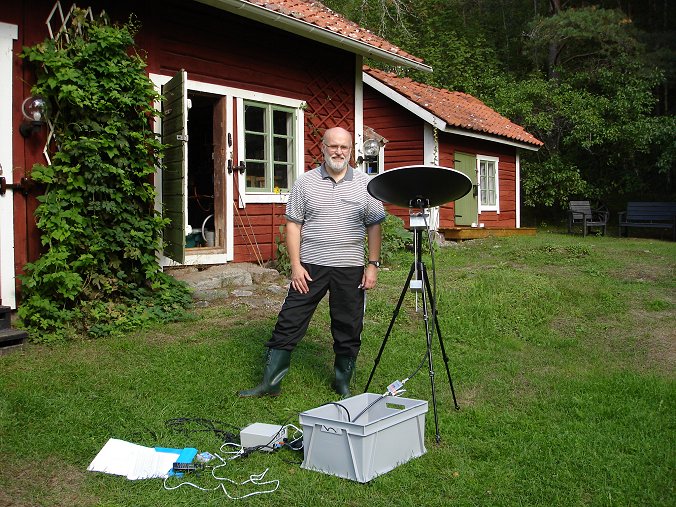
During reception of Oko
(Kosmos 2393) on 25 August 2006
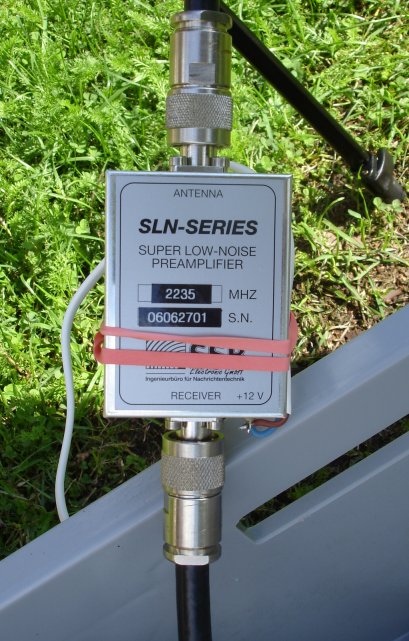
SSB Electronic pre-amp
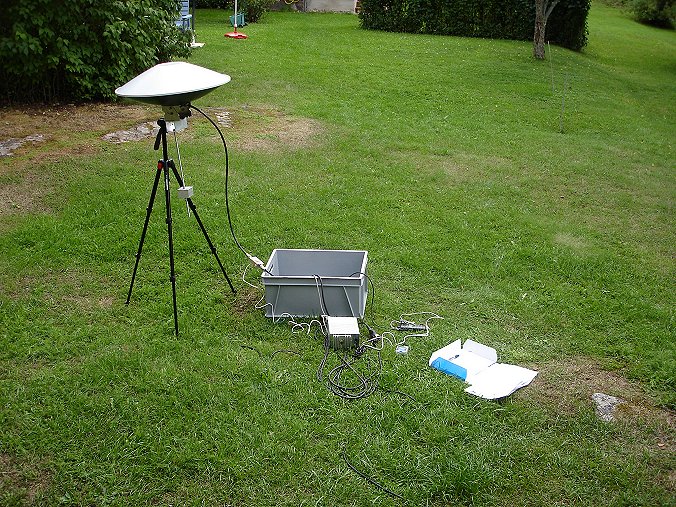
Almost straight up!
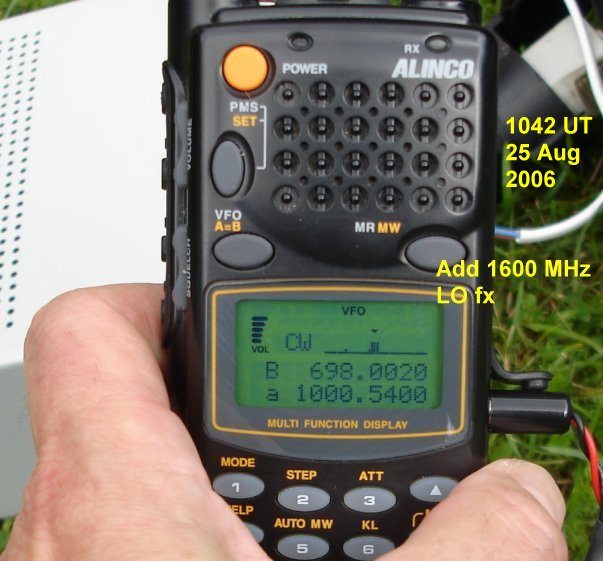
The signal on 2298 MHz
shows up clearly on the spectrum display of the Alinco

 Back
to space tracking notes
Back
to space tracking notes
 To
track the Russian Oko missile-warning satellites (see sketch on the right)
on S-band is no big feat but for me it was great, after 40 years of satellite
monitoring, to finally track a satellite on S-band. Oko satellites transmit
strong CW signals on 2286, 2292, 2298 and 2304 MHz. These satellites move
in "Molniya" orbits, the elliptical orbits with about 12 hours period and
apogee over Asia or North America. The Asian loop apogee can be seen at
75-80 degrees elevation from Sweden and the satellite moves very slowly.
In this way a fixed antenna direction can be used for long periods. Hopefully,
this little account can encourage more enthusiasts to try this.
To
track the Russian Oko missile-warning satellites (see sketch on the right)
on S-band is no big feat but for me it was great, after 40 years of satellite
monitoring, to finally track a satellite on S-band. Oko satellites transmit
strong CW signals on 2286, 2292, 2298 and 2304 MHz. These satellites move
in "Molniya" orbits, the elliptical orbits with about 12 hours period and
apogee over Asia or North America. The Asian loop apogee can be seen at
75-80 degrees elevation from Sweden and the satellite moves very slowly.
In this way a fixed antenna direction can be used for long periods. Hopefully,
this little account can encourage more enthusiasts to try this.



